

Nineteen online lessons that systematically and explicitly teach kids HOW to construct syntactically complex sentences. This course includes unique hands-on manipulative tools utilized to guide students in the formation of powerful, concise, and varied sentences so they communicate their ideas into academic writing. Plus, unique and adorable animated characters teach word choice, style and clarity, as well as grammar, capitalization, and punctuation!
Over 200-pages packed with colorful instructional tools, and so much more!


Nancy Fetzer’s Sentence Building curriculum is packed with the most current and highly-effective research based strategies simplified into kid-friendly lessons implemented with methods and tools to progressively build the critical skills necessary to form well-developed sentences. This program consists of nineteen online-lessons, backed with interactive worksheets and homework practice. These direct-to-kids’ lessons provide step-by-step explicit instruction supported by unique tools and interactive charts. In this program, a scope and sequence of skills are incrementally introduced, practiced, and spiraled in a continuum of lessons to achieve mastery of the foundational skills necessary to write well-developed sentences.
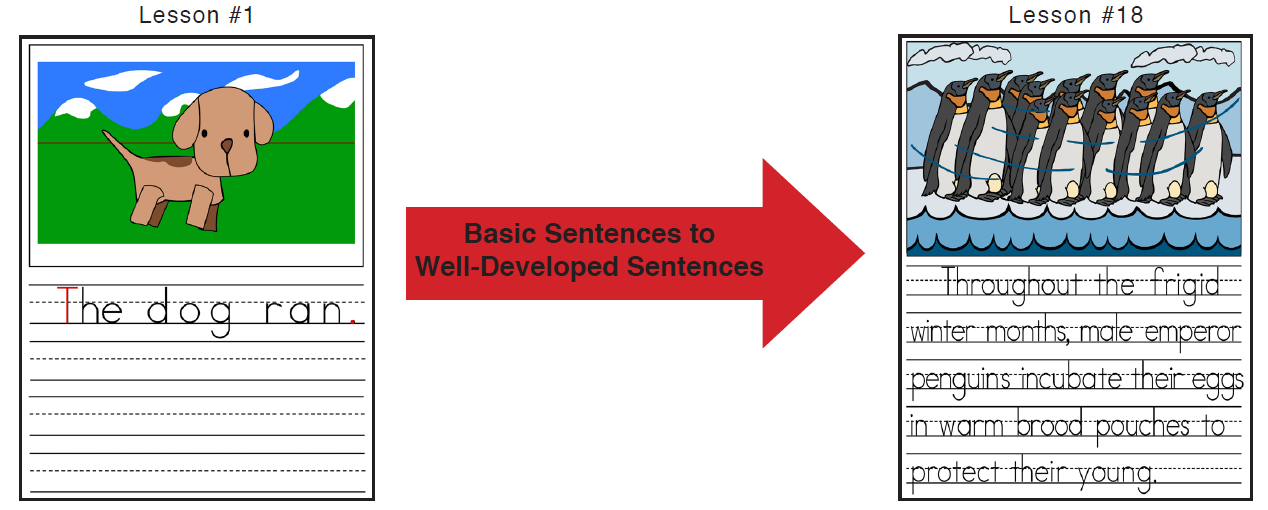
These online video lessons are packed with instructional strategies. Therefore, to maximize learning and application, periodically stop and repeat parts to reinforce understanding. Also, pause in lessons to allow time when ideas, pictures, or sentences need to be recorded on the worksheets. Finally, since repetition and practice are critical to mastery of skills, students who need additional instruction are encouraged to watch videos repeatedly. Hence, lessons are either completed in one view, or repeated daily for extended practice to reach mastery.
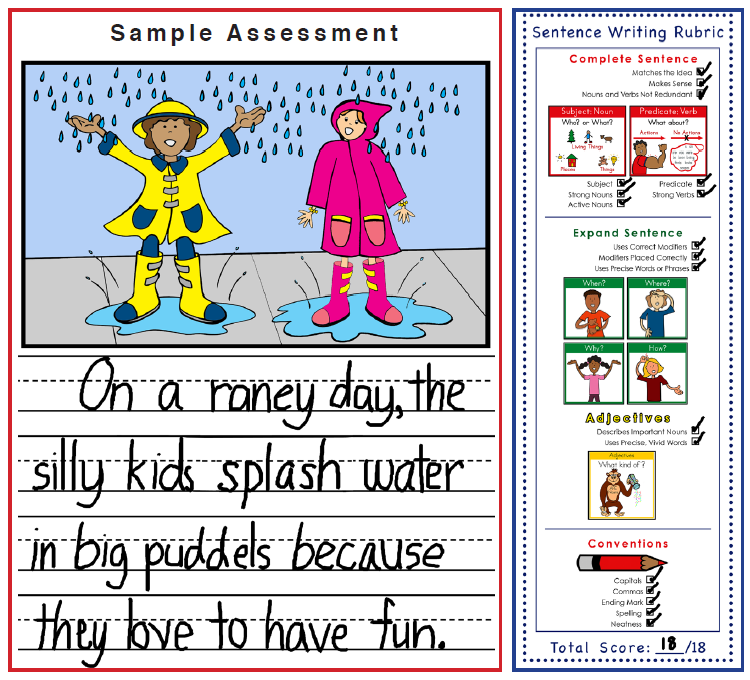
Assessment: The “Sentence Writing Rubric” is a checklist of specific elements for a well-written sentence. The purpose of this rubric is to break down a sentence into measurable parts, in order to identify what skills students have mastered and what skills to be taught.

Administration of Assessments: The “Assessment” chapter includes an initial assessment, two on-going assessments, and a final assessment. Before a student begins this program, administer Assessment #1, the initial assessment, to determine a baseline of his/her sentence writing skills. After that, Assessments #2 and #3, on-going assessments, are provided to monitor his/her progress to determine reteaching of deficit skills. Lastly, Assessment #4, the final assessment, evaluates the skills the student mastered and skills that need reteaching before exiting the program.
Graphing Chart: After each assessment, students fill-in their “Watch Me Grow!” graph to track their individual growth throughout the lessons.
Lessons: Depending on the skills taught, the nineteen lessons range from seven-minutes to twenty-five minutes in length. In every video, the teacher introduces, explains, and models skills through explicit direct instruction steps for students to easily understand and actively engage in the learning process.
At the start of every video, the tools and worksheets students need for the lesson are identified and displayed. For example (below), in Lesson 17, students need the “Mighty Modifiers Worksheet”, the “Who/What Chart”, and the “Sentence Building Cards”, as well as a regular pencil and red pencil.
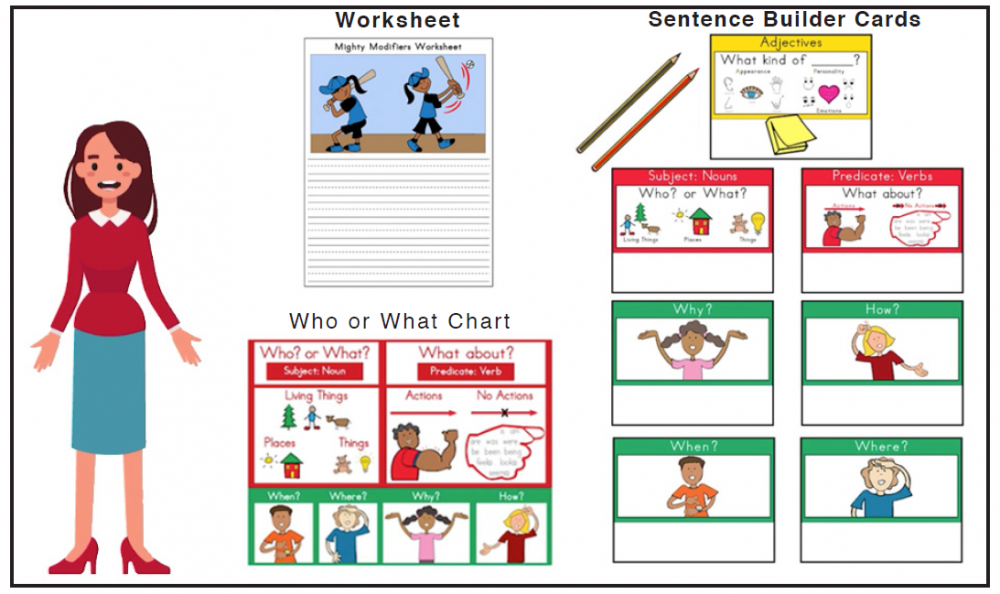
Once the materials are identified, the teacher then begins the lessons with an idea, something for students to write about. Ideas are presented using engaging animations or colorful pictures from which sentences are generated (example below shows cartoon from Lesson #17).

Lessons (continued): After the animations, students then follow systematic direct instructions steps to build powerful sentences supported by hands-on tools, colorful charts, and other unique resources.
For example, for Step One in Lesson #17, students use the color-coded “Who/What Chart” and the red subject and predicate “Sentence Building Cards” to form a complete sentence.

Next, in Step Two, students use the green modifier “Sentence Building Cards” (“when”, “where”, “why” and how”) to extend their sentences to include information that tells more about or describes the idea. Finally, students “travel” or move the green cards creating variety and style in their sentences.

Lessons (continued): In Step Three, students generate adjectives to describe the important or “worthy” nouns in the sentence. “Adam the APE”, one of the animated characters in this program, teaches this strategy, as well as how to utilize a resource, “The Adjectives Word Bank” to choose the most precise and vivid descriptive words.

Once students follow the three steps to form their sentences, they then write (or transcribe) them down on their worksheet pages. Later, a homework or seatwork page, included in each lesson, is assigned for repeated practice of the new and previously-learned strategies.

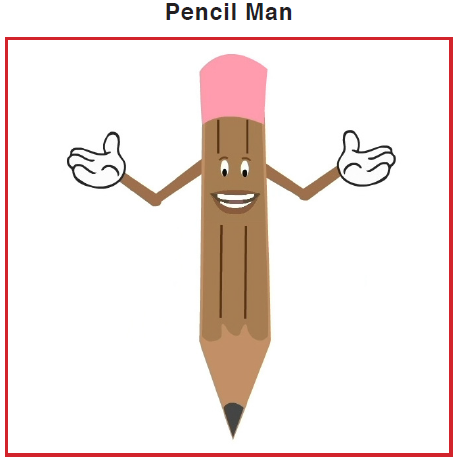
Transcription: Putting the sentence into written form, also know as transcription, requires spelling and handwriting skills. In the first eight lessons, the animated “Pencil Man” appears to explain the writing or transcription part of the lessons. Some students may need to dictate their sentences to a helper to transcribe onto their worksheets or homework pages, while others independently write their sentences. This unique instructional format, or modification, ensures that every child, even if he/she lacks handwriting and spelling skills, accesses the critical building blocks for written language, the formation of well developed sentences. During the online lessons, utilize one of the two instructional formats (below) based on each student’s transcription skills.
Modifying the Lesson: Students participate in all the video lessons, building and orally rehearsing well-developed sentences, but their helpers transcribe their words onto their worksheets or homework pages. Spelling and handwriting are taught separately, in a scope and sequence of instruction, then bridged to the sentence writing as students acquire those skills.
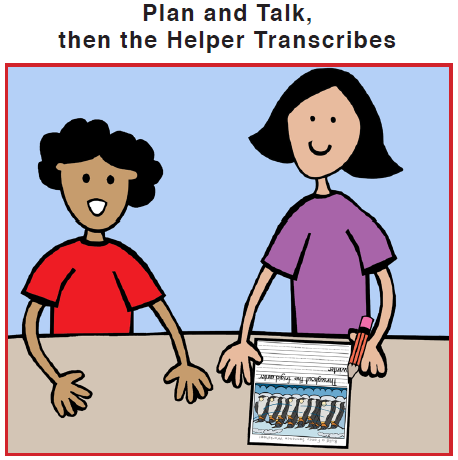
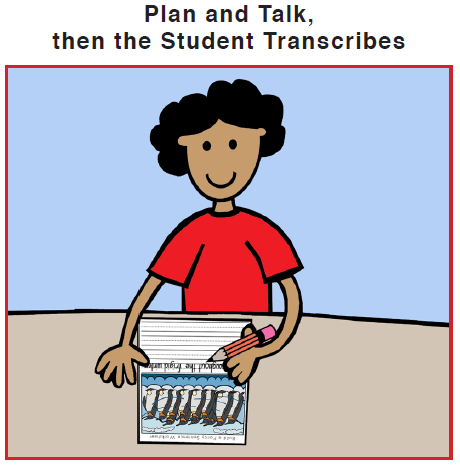
Plan and Talk, then Students Transcribe: Students that have well developed handwriting and spelling skills, not only plan and talk, but also independently write their sentences onto the worksheets or homework pages.
Tools and Charts: This program provides many color-coded interactive tools and charts as visual hands-on materials for students to follow along in lessons, as well as aides for their independent work.
Who or What Chart: The “Who/What Chart” is a color-coded tool for creating complete sentences (red, subject-predicate), expanding them with modifiers (green section), and generating adjectives (yellow section).


Build a Sentence Card Chart: This colorful chart displays the three steps students follow to form well-developed

Sentence Builder Cards: As students form their sentences, following the steps on the “Build a Sentence Chart”, they record words, phrases, or clauses onto their matching “Sentence Builder Cards”. These manipulatives not only isolate the different parts of speech by their functions, but also shows how parts of the sentence (green cards) move to create style and variety.

Revise & Edit Sentences Chart: This colorful chart lists steps students follow to revise their sentences. A special coding of words and phrases provide concrete methods for students to revise for content, word choice and style, as well as capitalization and punctuation.

Word Bank Booklets: Two different word bank booklets, one for adjectives and one for verbs, are resources students utilize to include more robust and vivid vocabulary as well as more precise words in their sentences.


Charts: There are three colorful charts in this program, one for articles and then the remaining two for pronouns and proper nouns. Students utilize these resources as visual aides to properly use these parts of speech in their sentence writing.



Special Characters: Many different unique and interesting animated characters are used in the online lessons to add interest and engagement for students to master the different skills.

The teacher explains and models strategies in every video.

Adam the APE demonstrates the steps to add adjectives, “fancy or spicy words”, to describe the important nouns in sentences.

Muscle Man explains that action verbs are the most powerful part of speech, then he shows how to choose the best verbs to form powerful sentences.
Special Characters (continued): Many different unique and interesting cartoon characters are used in the online lessons to add interest and engagement for students to master the different skills.

Traveler Girl demonstrates how modifiers have many jobs:
to add more descriptions and/or information; to delete or
move for clarity; or to “travel” for style and variety.

The redundant policeman shows up to stop writers from repeatedly overusing important words and to explain how to replace them.

The Caveman shows students how a sentence without articles sounds like caveman talk.
When you shop with us, we want you to be completely satisfied. If for any reason you are not satisfied with your purchase, you may return the new and unused product within 14 days of receipt for a replacement or refund of the purchase price.
When your return has been received from USPS, UPS, or Fed X ONLY in resalable condition, we will either:
1. Credit your account for the amount of your purchase, less shipping, handling, and any applicable tariffs and taxes, free shipping promotions and other coupon offers/discounts.
2. Ship you a replacement of your product.
You will need to cover the cost of return shipping. Please use a shipping company, such as USPS, UPS, or FedEx. We are not responsible for lost or stolen merchandise.
FOR DEFECTIVE, DAMAGED, INCORRECT OR MISSING ITEMS:
You must contact us within 7 days of receipt. We will give you instructions on how to prepare the return package. In most cases, we will provide a prepaid shipping label to you. If the item proves to be defective, we will issue a replacement or refund the price of the item plus your original shipping cost.